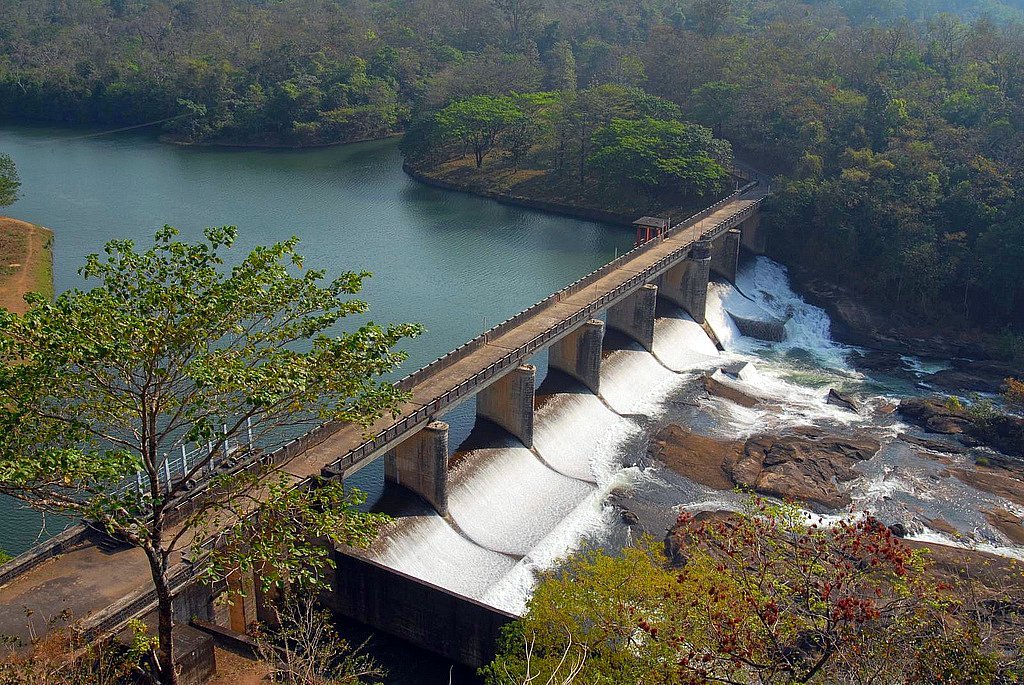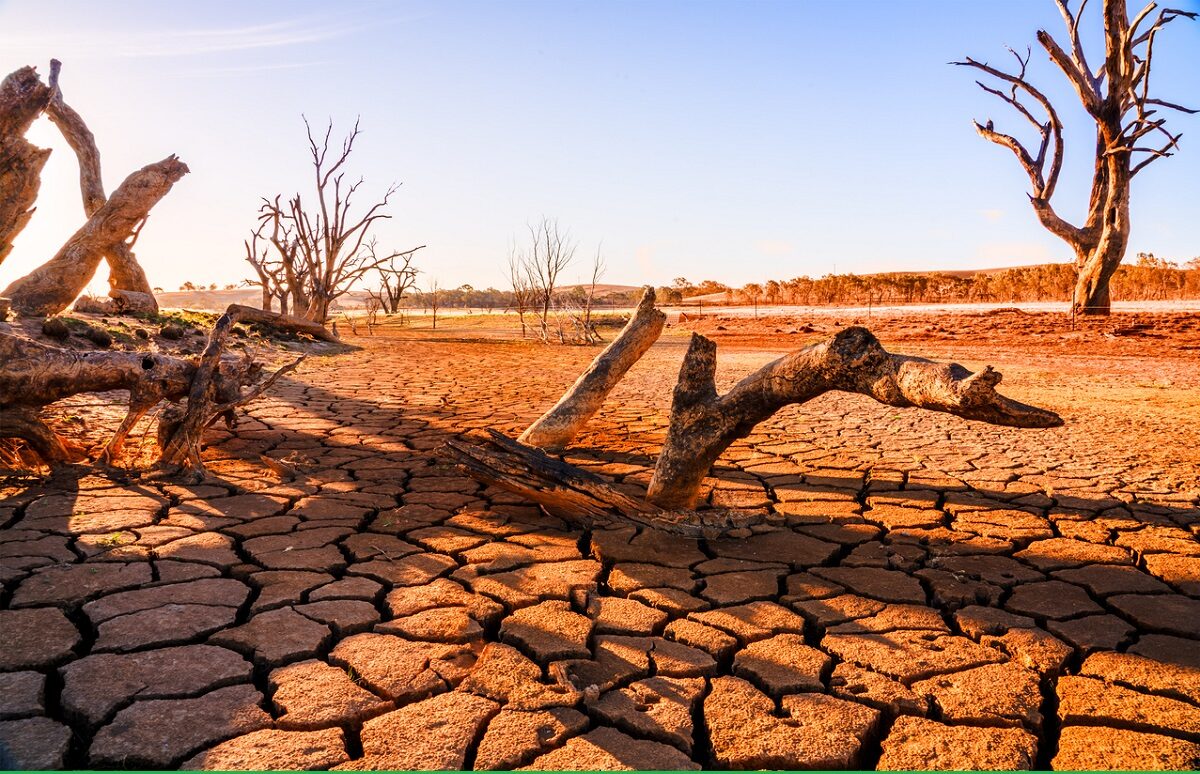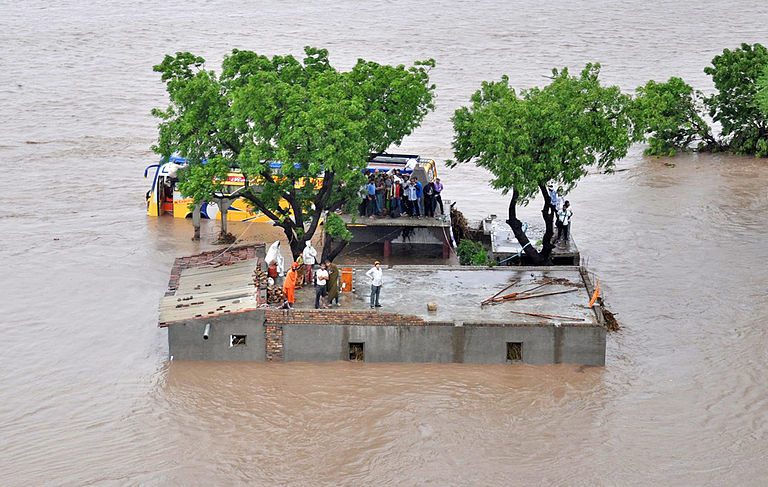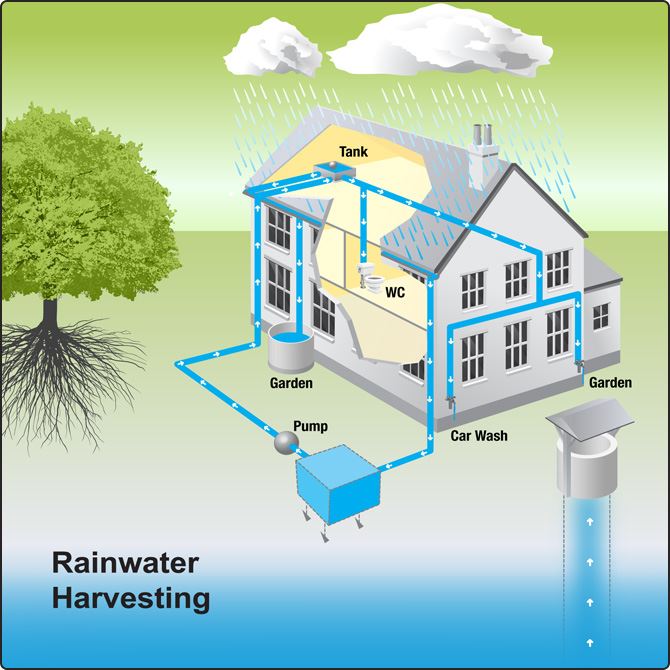In this section, we will rainwater harvesting, drought, and floods. Along with that, we will learn about management and other factors responsible for floods and drought.
Rainwater Harvesting
It is a localized system of capturing, collecting, storing, and using rainwater flowing in streams, rivers, channels, etc.

Systems used for Rainwater Harvesting
Construction of check Dams: Also called Micro-Watershed Management, in this, the water from small rivers and streams are diverted and collected into a single water unit.

Construction of ponds, wells, lakes, channels, Bawli, Kund (Artificial Tanks): In areas where check dams cannot be made due to any reasons, ponds can be made. Other than ponds, wells lakes, Bawli, Kund, etc. are beneficial for saving water.

Roof Top Rainwater Harvesting: This method of rainwater harvesting is most effective method among all. It directly transfers water either to ground water table which help in rise of ground water level or to underground tanks through which water can be used later.

NATIONAL WATER GRID
Grid is a system of transfer from surplus region to deficit region to match demand and supply. Himalayan rivers have surplus water. Peninsular rivers are deficient in water. The transfer is done by a comprehensive and integrated system of artificial dams, reservoirs, and canals.
Advantages:
- Appropriate use of water.
- Drought & Flood Management.
- Improved agriculture production & productivity.
- Inter-regional and regional trade.
- Employment and income will increase.
- National integration.
 Drought
Drought
Drought is an atmospheric condition identified through a deficiency of rainfall and moisture. According to the Indian Metrological Department If deficiency of rainfall is 25-50% then it is called Drought and if it is more than 50% then it is called Severe Drought. The factors which are responsible for drought are the late onset of monsoon, early withdrawal of monsoon, and a long dry spell between two wet spells of monsoon.

Drought Prone Regions Of India
These are identified by high fluctuation & failure of rainfall over the years. These are classified into 3 categories.
- Gujarat & Western Rajasthan: Rainfall is low because Aravalis is parallel to South Western Monsoon.
- Deccan Plateau: The leeward side of Western Ghats.
- Individual Pockets: Kalahandi (Orissa), Purulia (West Bengal), Bundelkhand (Madhya Pradesh and Uttar Pradesh), and Thirunvelli (Tamil Nadu).
Economic Effects
Rainfall and Moisture deficiency both are directly related to crop failure and steep fall in agriculture production and productivity. There is a steep rise in food products; fodder, hoarding, and black-marketing of food-grains are common. As there is a fall in income and employment of farmers. Farmers are forced to undertake distress selling of their land, machines, and domestic animals.
Social Effects
Hunger and starvation are common. People are forced to leave rural villages in search of employment and income; thus the social fabric of life is fragmented. If drought and efficiency of availability of food is acute, there is also death through starvation. Farmers are forced to take loans from moneylenders. They fall into the vicious cycle of Debt-trap. In the case of non-payment, land eviction is common. As a last resort, farmers commit suicide.
Environmental Effects
Degradation of forest, grasslands, water bodies are common. Drought is directly connected with desertification.
Drought Management
Drought Prone Area Programme (DPAP) was started in 1974 & 1975 & Desert Development Programme in 1978-79. Both of the programs emphasized on soil and water conservation to mitigate the side effects of drought strategies includes:
- Rainwater Harvesting
- The expansion of irrigation facilities is through the construction of dams, reservoirs & canals.
- Expansion of dryland farming which is primarily based on the introduction of these inputs:
- Drought Resistant seeds & crops
- Drip Immigration & Fountain Immigration
Drip Irrigation: It is a network of directly delivering water and nutrients to the roots of crops. Israel is one of the leading countries in the world to develop this system of irrigation.
Soil Conservation, Mulching, Afforestation, and increasing grassland covers are one of the other method by which drought can be avoided. Silviculture means plantations of timber from where the raw materials are provided for rural and cottage industries. Poultry, Apiculture & Dairy Farming provides additional Employment and income without intensive use of land and water.
Floods
The rise in the water level of rivers and streams and as consequence submergence of croplands, forests, grasslands, and human settlements is described as Flood. This rise in the water level of rivers and streams is caused when the inflow of water exceeds the outflow of water in a given stream or river in a given duration of time. The factors associated with floods climatic Factors, physiographic Factors, and human Factors.

Climatic Factors
- Extensive catchment area/basin area of the river.
- The narrow outlet of rivers and streams.
- Meandering in the rivers.
- Sitting of rivers and streams.
- Presence of inland drainage system e.g.: Flood in Western Rajasthan and Gujarat whenever there is high rainfall.
Human Factors
- Leakage from dams and canals
- Expansion of human settlements towards the belts of rivers and streams.
- Deforestation in mountain regions
- The sudden opening of the gates of dams and reservoirs.
Effects of Flood
Flood affects human settlements and even the environment. These are broadly classified into the following:
- Economic effects
- Social effects
- Environmental effects
Flood Management
The National Flood Control Programme was started in 1954. It combines both long-term and short-term objectives.
Short term- Short term objectives include force-casting and early warning systems to get information on weather changes well in advance. Short-term activities include, evacuation of people, search and rescue operations, and rehabilitation and relief.
Long – Term: Long term objectives include, construction of Artificial dams, artificial reservoirs, artificial canals to redistribute water from surplus regions to deficit region, Construction of embankments, andStrong infrastructure like roads and railways are also part of the long-term objectives. Ultimately, the National Water Grid is considered to be the most important system of infrastructure for controlling and mitigating floods.

